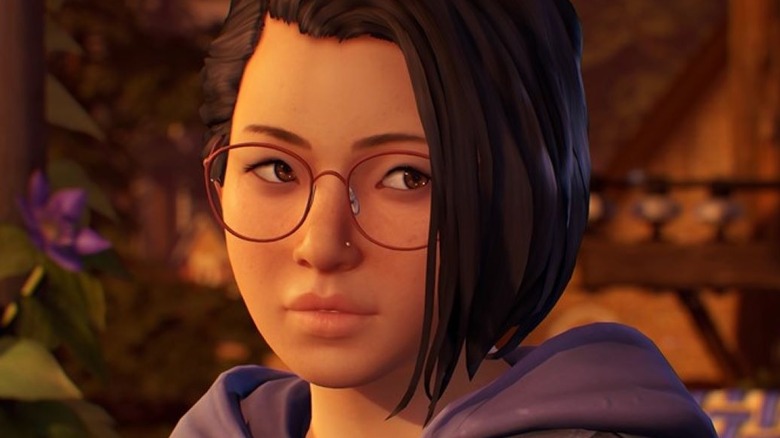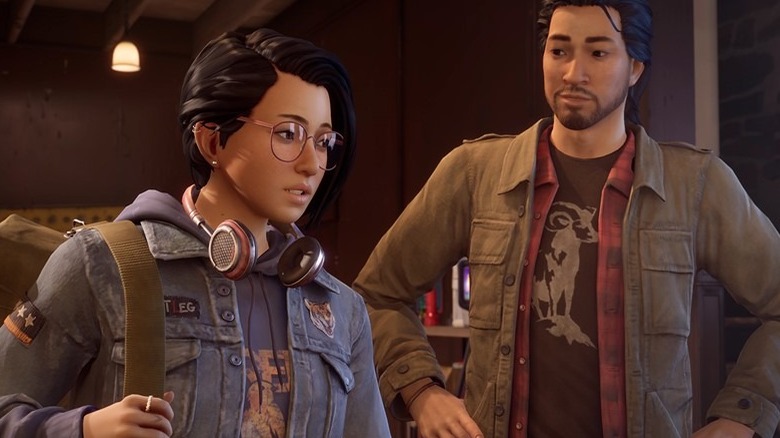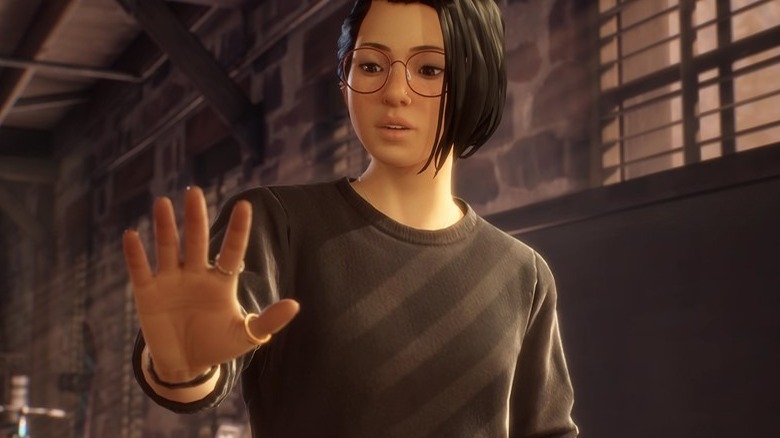What The Critics Are Saying About Life Is Strange: True Colors
Square Enix's "Life Is Strange" series set the standard for emotionally resonant adventure games starring superpowered teens. The first mainline installment followed two friends embroiled in a time-traveling murder mystery. "Life Is Strange 2" shifted gears, focusing on a young man and his telekinetic brother who find themselves on the run from the cops. "Life Is Strange: True Colors" changes the formula with a sole adult protagonist but still delivers the strong storytelling that defines the franchise.
Alex Chen, a queer Asian American woman, comes to Haven Springs, Colorado to live with her brother Gabe after hopping between foster homes in her youth. Her empathy power allows her to see color-coded auras for emotions, pick up on emotional marks that people leave on objects, and even absorb others' emotions into her body. Just as her life seems to be taking a turn for the better, a murder disrupts the peace and twists Alex's story from a personal journey into a homicide investigation.
As the first major entry in the series not developed by Dontnod Entertainment, you may wonder whether the new team, Deck Nine, delivered on its intriguing premise. No stranger to "Life Is Strange," Deck Nine created the three-episode prequel "Before the Storm" before Square Enix tapped the studio to take on the next core game. Here's what critics are saying about "Life Is Strange: True Colors."
True Colors features a strong setting, storytelling, and interactive elements
Deck Nine continues its storytelling streak with "True Colors." IGN's Taylor Lyles called it the "best in the series thanks to consistent writing for both main and side characters," — something they felt past "Life Is Strange" titles lacked. They also applauded how the setting successfully emulates a small mountain town where "everyone knows their neighbors" and people seem to "genuinely care about each other."
Alex learns about the locals and new friends through her powers, social media, and exploration in a way that complements the gameplay. Rachel Watts explained in her review for PC Gamer that Alex's power blends with the series' signature exploration mode, where players interact with the environment to uncover new information and progress through the story.
Alex's character development stands out, especially since she's the sole protagonist and not part of a duo like in other "Life Is Strange" entries. Watts praised how the game brings her to life through aspects like diary entries and letters. NME's review also pointed out how "True Colors" drops the "cheesy teen dialogue" for 21-year-old Alex, who primarily speaks to other adults.
True Colors' empathy power and representation divided critics
Ty Galiz-Rowe, who reviewed the game for VG247, asserted that the most emotionally resonant parts of the game "don't need a gimmick to be special." According to Rowe, players don't need color-coded auras to understand why others behave the way they do if the storytelling stands on its own.
The Washington Post's Shannon Liao also noted that Alex's cultural background and sexual orientation barely come up in "True Colors." While some might see this as a sign of normalizing underrepresented groups in games, others viewed it as a missed opportunity. Liao, who is a queer Asian American woman like Alex, said the title somehow doesn't feel complete without integrating more of her identity into the world.
"I've seen and heard a lot of bigotry over the years, and it's great for Alex Chen that she gets to avoid most of it, even in a small, homogenous town, but it just feels hollow and unreal," Liao tweeted about her review.
"Life Is Strange: True Colors" releases for PC, Stadia, PlayStation 4, PlayStation 5, Xbox One, Xbox Series X|S, and Nintendo Switch on September 10.



